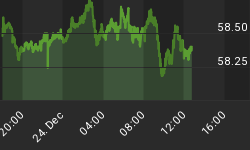An article yesterday presented six charts attributed to David Rosenberg (Gluskin Sheff, Toronto) that are said to show:
-
real and nominal (2 separate charts) GDP per capita 12 quarters after the end of each of six pre-2009 U.S. recessions dating back to Q1 1961. Each chart shows that the recovery from the latest technical recession has been significantly less than the average recovery, and somewhat less than the recovery from the worst recovery number of the previous six recessions. Interestingly, the worst recoveries of the seven (including the current recovery) were the last three.
-
the short-term (latest 31 months to July 2012) and long-term (from 1959) U.S. housing starts (2 separate charts). These charts clearly show how low U.S. housing starts currently are when measured against historic U.S. housing starts. On average, they look to me to be currently running at a rate about 50% of the average annual number of housing starts for the 48 year period ended 2007 (800 thousand per year currently versus about 1.6 million per year on average during said 48 year period).
The following table shows the U.S. population, and percentage growth in population during the 1959 - 2012 time period (millions - sources various). Note the comparatively consistent annual growth in absolute numbers per year over the 53-year period. This table, in combination with Mr. Rosenberg's housing charts, puts current U.S. housing starts into even clearer 'dampening' perspective.
| Year | U.S. Population | Growth (#'s) | Avg Annual Growth (#'s) |
| 1959 | 177.1 | - | - |
| 1969 | 202.7 | 25.6 | 2.6 |
| 1979 | 225.1 | 22.4 | 2.2 |
| 1989 | 247.3 | 22.2 | 2.2 |
| 1999 | 275.6 | 28.3 | 2.8 |
| 2007 | 299.4 | 23.8 | 2.4 |
| 2012 | 313.0 | 13.6 | 2.7 |
- the last two charts show S&P 500 'Sales per Share', and U.S. corporate profits, in each case dating from 2003. I am not sure without speaking with Mr. Rosenberg why he thinks these show much about the U.S. economy viewed in isolation, as I think both charts inherently must include the impact of U.S. corporation profits that are earned both outside the U.S. and domestically within the U.S. - although Mr. Rosenberg may have segregated earnings generated outside the U.S. where the article - a summary of his work - hasn't noted that.
All that said, I suggest you take the time to visit the article at 3 Big Areas that David Rosenberg Gets Right and review these six charts, particularly the first four of them.
Topical Reference: 3 Big Areas that David Rosenberg Gets Right, from Business Insider, Cullen Roche, October 15, 2012 - reading time 3 minutes.
















